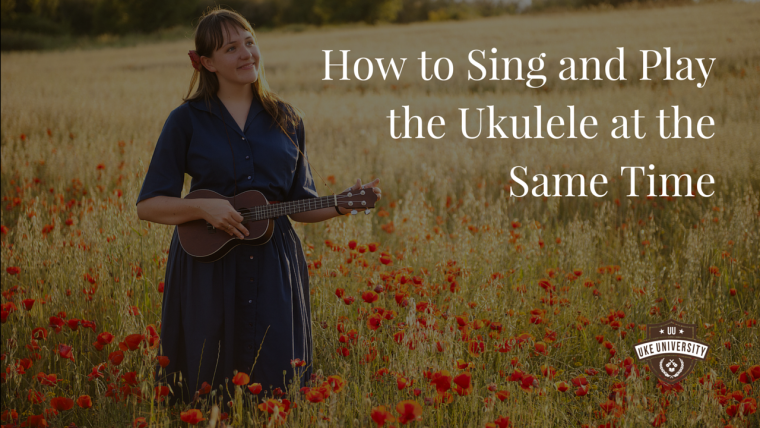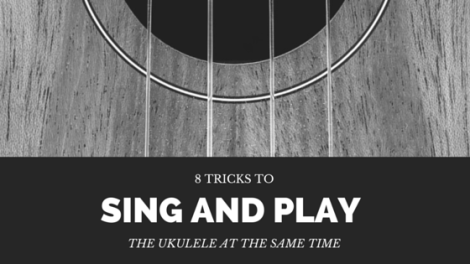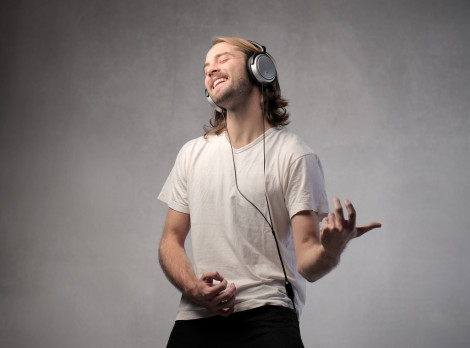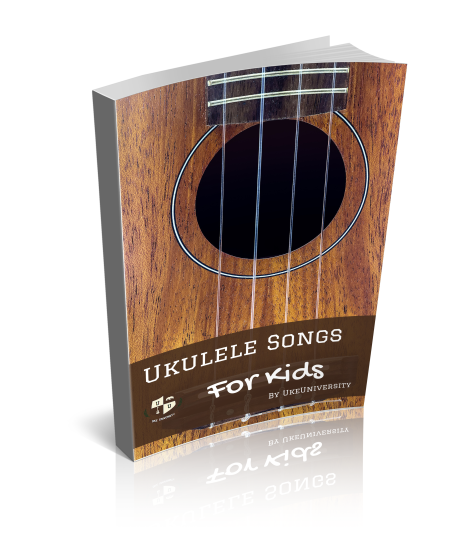Do you struggle with singing and playing the Ukulele at the same time? It’s a common issue but this simple guide will teach you how to sing and play the ukulele at the same time.

When I first started learning the guitar, as a teenager, I really wanted to learn to sing and play my guitar at the same time. Like many teenage boy dreams, I imagined that I could serenade some attractive young lady or be “cool”. Of course, neither of those things happened, well I do occasionally sing a song for my partner and perform, but I get great enjoyment from singing and playing at the same time.
If you are starting out then I suspect you are having some issue with singing and playing along at the same time. While I can’t give you any specific singing tips (honestly, my voice isn’t that great). I can give you this simple guide how to sing and play the ukulele at the same time.
The two things holding you back
Before we get into the actual tips and how to sing and play the ukulele at the same time, let’s look at the things which are holding you back. Once you know the issues you can work out what will help you combat them best. Your two issues are probably
Confidence is actually one of the biggest issues, if you don’t think you can do it, you probably won’t do it. And worse than that, you probably won’t try or push yourself to sing and play at the same time. Also a lack of confidence in what you are playing will cause you to have to think and second guess yourself, stopping yourself from playing.
Multitasking is the other big issue and as you can guess, it feeds in to confidence and vice versa. If you can’t multi task, you feel less confident, if you feel less confident, it’s harder to multitask.
The problem with singing AND playing at the same time, when you are starting out, is you really need to focus on playing. When you are learning a new skill it requires so much more concentration than an old skill. Just watch a baby trying to walk or someone knitting. When they start out they have to really intensely concentrate on the task, giving it their full attention. But once you have experience and develop muscle memory, you don’t even have to look when you are doing it and can speak at the same time.
You may have some other issues with singing and playing but I’m willing to bet that these are your biggest issues.
8 Tricks to help you Sing and play the ukulele

Sing along to the song without playing
The first strategy you should employ is to get more familiar with singing the song. The will help at least that part of your multitasking become second nature. It may feel a bit awkward at first but that will help you much more later on.
Hum as you strum
When you hum, you can focus only on the melody and not the lyrics. This reduces the mental load when you try and sing and play. It also means that if you forget the words, you can keep on humming along.
Tap as you sing
To help you keep your rhythm and to get more used to doing two things at once, try tapping your foot as you sing along. Tapping is really easy to do, help you practice your rhythm for strumming and is a lot easier than thinking about chords as you play.
Air strum as you sing
Slightly more difficult than just tapping but much more practical. Try “Air strumming” as you sing. Again you don’t need to think about just the chords but you can focus on the rhythm and getting the lyrics nailed.

Practice the chord changes
One of the parts when people most easily trip up as beginners are chord changes. Moving from one chord to another chord takes a lot of concentration to make sure that your fingers are moving to the right place. Practice changing between chords so that you can change chords without thinking and focus on the words you are singing.
Sing just the easy bits
Once your growing in confidence, try singing the easiest bits and getting comfortable with them. Maybe there is a section which only requires you to play one chord for an extended period. Just sing that bit and work on that. As you get more confident, move on to more difficult parts.
Start with an easy song
Guess, what. Easier songs are much easier to play and sing at the same time than more difficult songs. If there are only a few basic chords and infrequent chord changes, you’ll do a lot better than if there are lots of complicated chords which frequently change.
[Need some easy songs to play? Get 22 ukulele songs for Kids for free when you join our newsletter.]

Play till it becomes second nature
When you can play a song back to front, upside down, without looking and with one hand tied behind your back (ok, maybe that last one is going a bit too far) then singing a long will be a lot easier than when you first come across a song and you don’t really know how it goes. Keep practicing and it will become much easier to sing along to.
Play and sing slowly
Honestly, even baring all the other tips in mind, this is probably the best thing you can do to help you play and sing at the same time. At some point you’re going to have to just give it a go and to be honest, it will probably be pretty difficult. However, it will get easier and you will speed up. Honestly, I recommend that you just start giving it ago. Slowly work line by line and build up.
All the other tips will help you with your multitasking but you’re going to have to push yourself at some point. Don’t wait too long.
Do you struggle to play and sing at the same time? What do you find difficult about it?